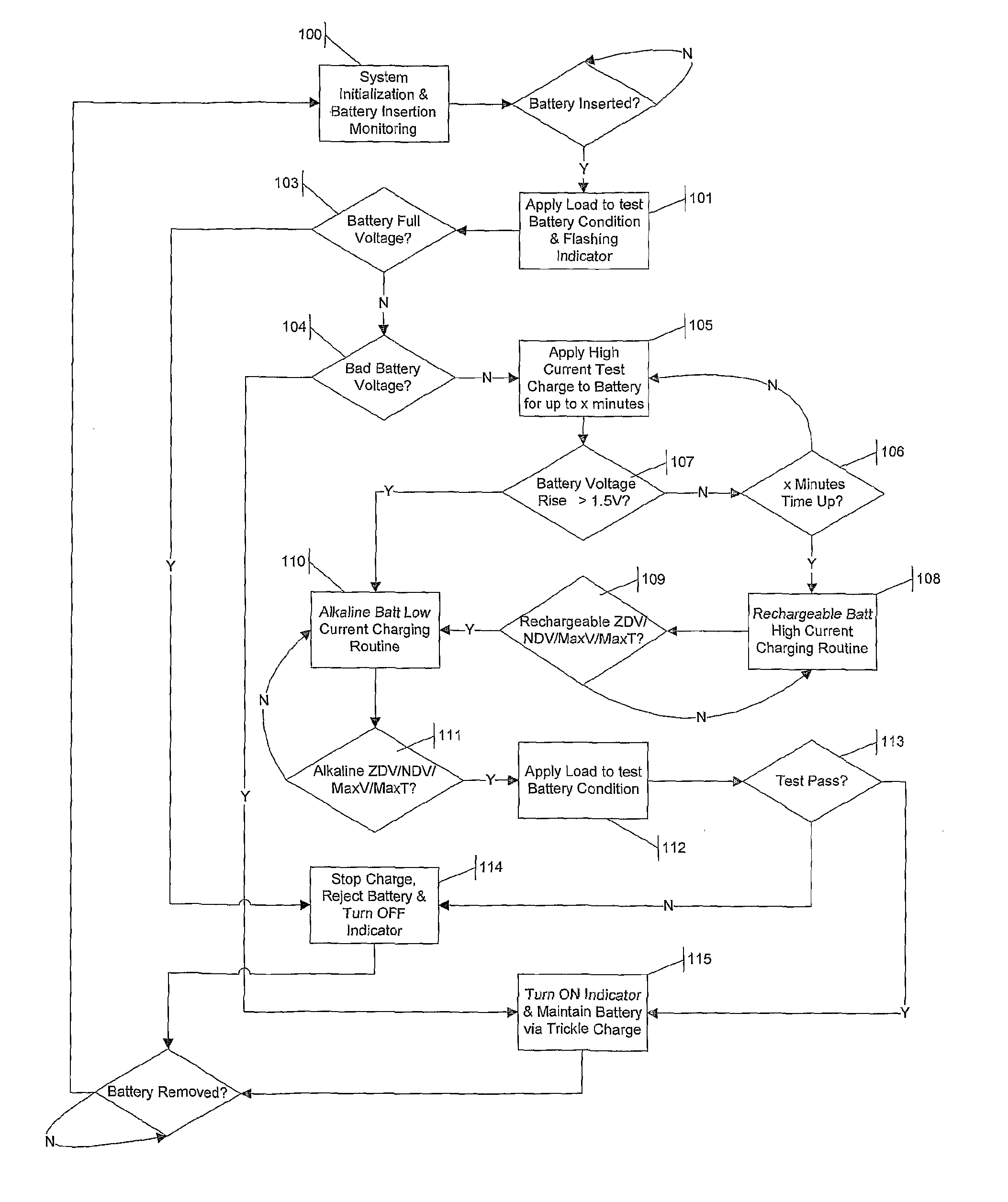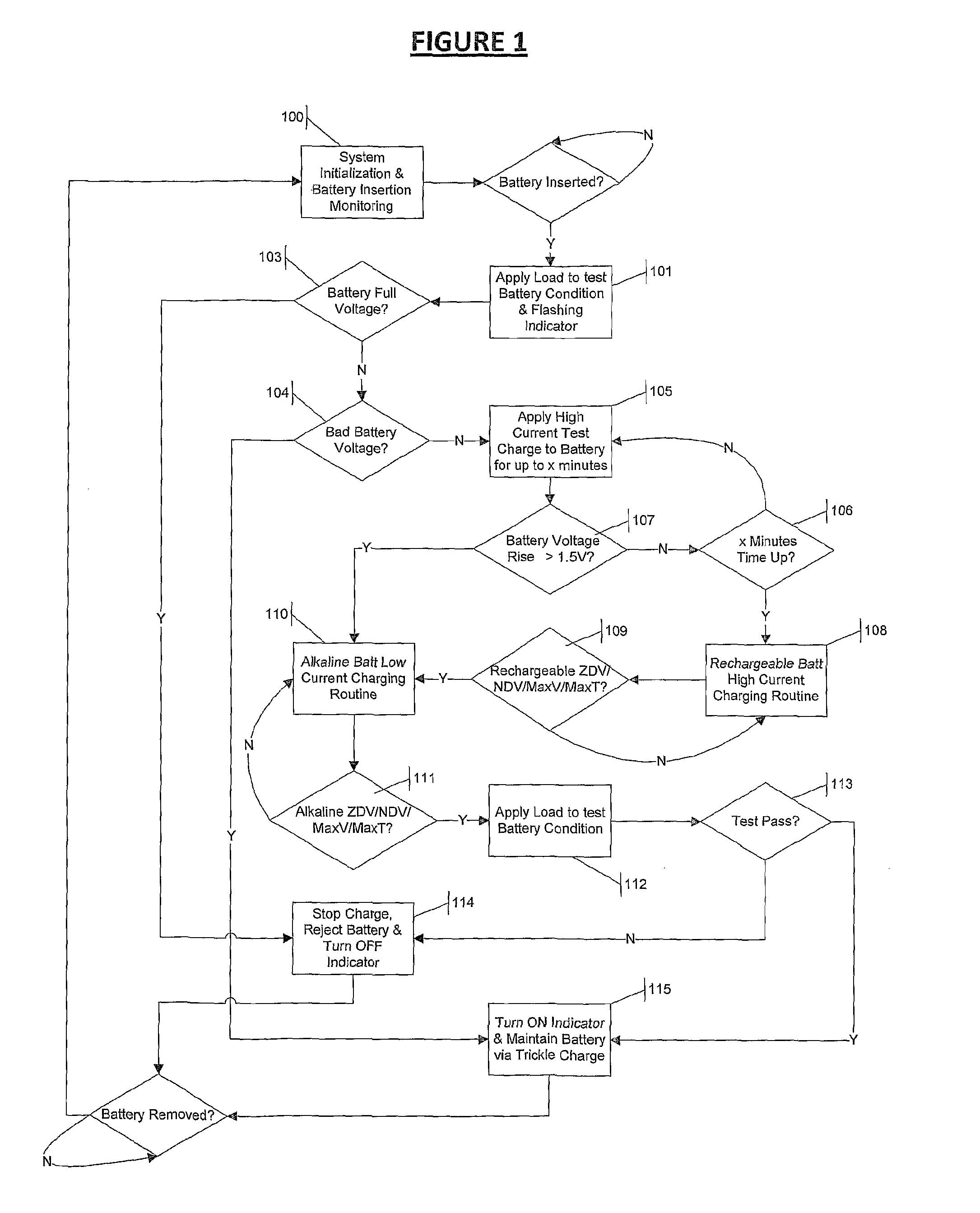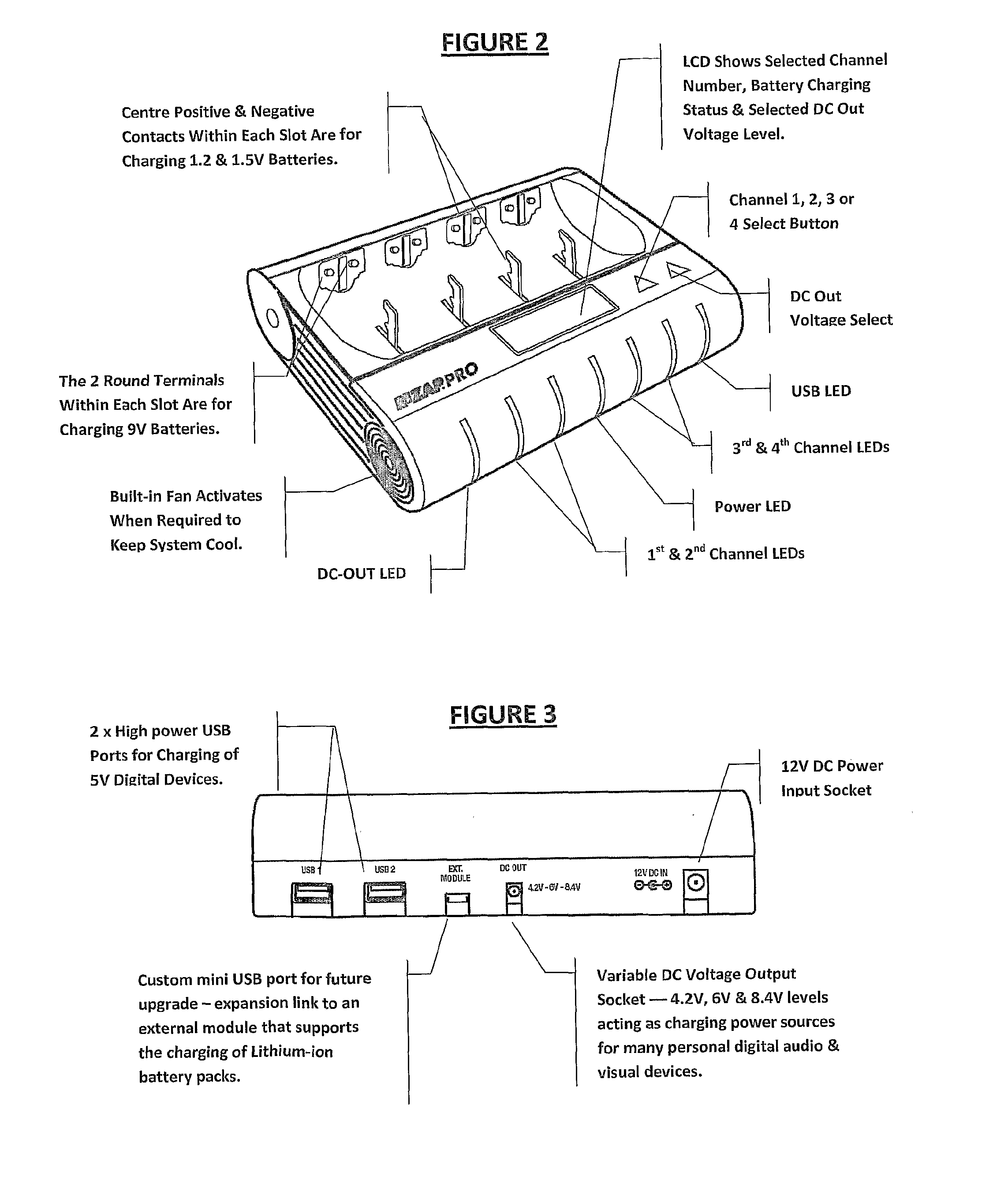Multi-chemistry battery charging system and method of identifying and improved charging technique for primary and secondary dry-cell batteries
a battery and multi-chemistry technology, applied in the charging of different batteries, electric vehicles, electrical equipment, etc., can solve the problems of weak efficiency and effectiveness, failure to provide a convenient and cost-effective solution, and inability to recharge batteries
- Summary
- Abstract
- Description
- Claims
- Application Information
AI Technical Summary
Benefits of technology
Problems solved by technology
Method used
Image
Examples
Embodiment Construction
Battery Types Guide
[0051]There are two main groups of batteries, primary (non-rechargeable) and secondary (rechargeable). The table below shows some of their most common features and properties:
TABLE 1Domestic Battery types with some of their common properties.TYPICALCOMMONLY USED DOMESTIC BATTERIESFEATURESCarbonAlkalineTitaniumRAMNiCdNiMHLithiumBatteryCarbon Zinc,AlkalineTitaniumRechargeabkeNickel CadmiumNickel Metal HydrideLithiumLabellingHeavy Duty,AlkalineNiCdNiMHLiGeneral purposeManganeseBattery ClassPrimaryPrimaryPrimarySecondarySecondarySecondaryPrimaryNominal Voltage1.5 V1.5 V1.5 V1.5 V1.2 V1.2 V1.5 V, 3 V, 6 VAvailable SizesAAA, AA, C, D, 9V, Prismatic (gum-stick)Cost Factor$$$$$$$$$$$$$$$$$$$$$Suffer from MemoryNoNoNoNoYesNoNoEffect problem?Suitable for useOccassionalModerateFrequentwith devices of“Usage-frequency”Suitable for useLow DrainModerate to High DrainHigh Drainwith devices ofExamples:Examples:Examples:“Drain Rate”Remote controlsGeneral light-duty electronic devic...
PUM
 Login to View More
Login to View More Abstract
Description
Claims
Application Information
 Login to View More
Login to View More - R&D
- Intellectual Property
- Life Sciences
- Materials
- Tech Scout
- Unparalleled Data Quality
- Higher Quality Content
- 60% Fewer Hallucinations
Browse by: Latest US Patents, China's latest patents, Technical Efficacy Thesaurus, Application Domain, Technology Topic, Popular Technical Reports.
© 2025 PatSnap. All rights reserved.Legal|Privacy policy|Modern Slavery Act Transparency Statement|Sitemap|About US| Contact US: help@patsnap.com



